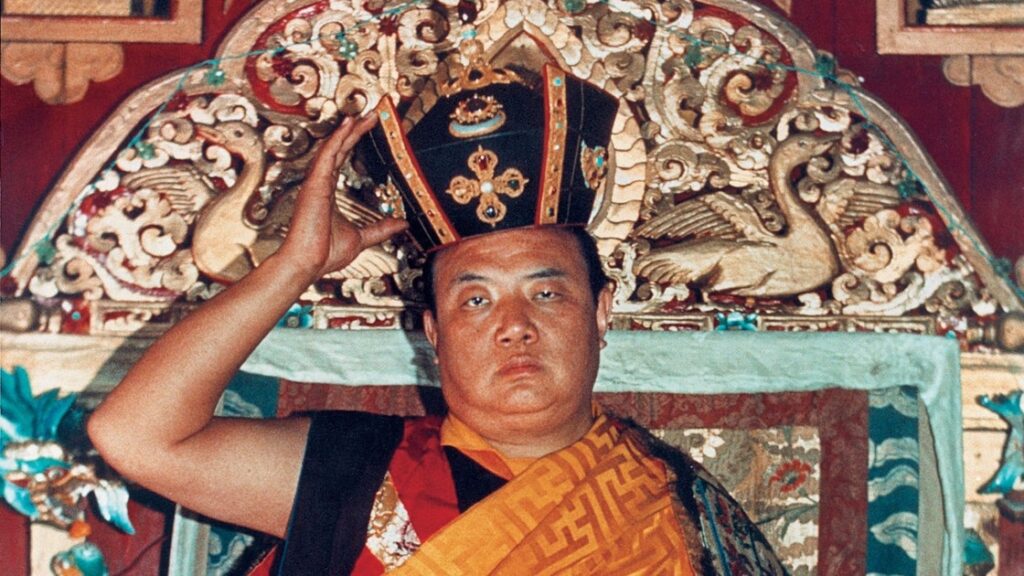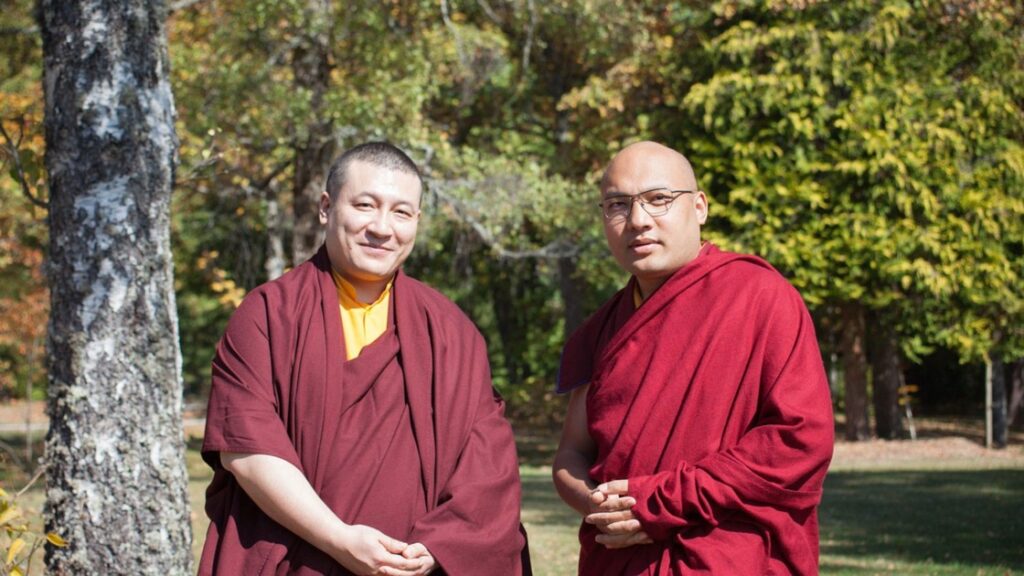+86-15889090408
[email protected]
Tibetan Buddhism is a spiritual tradition that encompasses a rich tapestry of lineages, each with its own unique teachings and practices. One of the most influential and revered lineages within Tibetan Buddhism is the Kagyu lineage. In this blog post, we will delve into the origins, teachings, and practices of the Kagyu lineage, shedding light on its profound contributions to Tibetan Buddhism.
The Kagyu lineage traces its roots back to the 11th century in Tibet, during the time of the great Indian master Tilopa and his disciple Naropa. The lineage was further propagated by the renowned Tibetan yogi Marpa Lotsawa, who traveled to India to receive teachings from Naropa’s disciple, the great yogi Milarepa.

Marpa Lotsawa’s transmission of the teachings to his main disciple, Milarepa, marked the beginning of the Kagyu lineage. Milarepa, known for his profound realization and poetic songs, became one of the most revered figures in Tibetan Buddhism. He passed on the teachings to his disciples, who in turn transmitted them to subsequent generations.
The Kagyu lineage is known for its emphasis on meditation and direct experiential realization. The teachings of the lineage revolve around the nature of the mind, the path to enlightenment, and the realization of one’s true nature. The primary practice within the Kagyu lineage is Mahamudra, often referred to as the “Great Seal.”
Mahamudra is a profound meditation practice that aims to directly realize the nature of the mind and the ultimate reality. It involves recognizing the empty and luminous nature of one’s own mind and resting in that recognition. Through Mahamudra, practitioners seek to transcend conceptual thinking and directly experience the nature of reality.
In addition to Mahamudra, the Kagyu lineage also incorporates other practices such as deity yoga, mantra recitation, and various forms of meditation. These practices are designed to purify the mind, cultivate compassion, and develop wisdom.
The Kagyu lineage has been upheld and nurtured by a succession of accomplished masters throughout history. Some of the most renowned masters include Gampopa, the main disciple of Milarepa, and the founder of the Kagyu school; the 1st Karmapa, Dusum Khyenpa; the 16th Karmapa, Rangjung Rigpe Dorje; and the 17th Karmapa, Ogyen Trinley Dorje.

The Karmapas, in particular, have played a pivotal role in the preservation and dissemination of the Kagyu teachings. They are considered to be the embodiment of enlightened activity and have been instrumental in guiding and inspiring countless practitioners.
The Kagyu lineage has had a profound impact on Tibetan Buddhism and has garnered a significant following both within Tibet and around the world. Its emphasis on direct realization and experiential practice has resonated with many spiritual seekers seeking a direct path to enlightenment.
The Kagyu lineage has also been instrumental in the preservation and transmission of Tibetan Buddhist teachings, art, and culture. The lineage has produced numerous accomplished masters, scholars, and artists who have contributed to the rich tapestry of Tibetan Buddhism.
Furthermore, the Kagyu lineage has played a crucial role in fostering inter-lineage harmony and collaboration within Tibetan Buddhism. The Kagyu masters have often engaged in dialogue and exchange with masters from other lineages, enriching the overall spiritual landscape of Tibetan Buddhism.
The major branches of the Kagyu lineage, shedding light on their characteristics and contributions to Tibetan Buddhism.
The Karma Kagyu lineage is one of the most well-known and influential branches of the Kagyu tradition. It traces its origins back to the 1st Karmapa, Dusum Khyenpa, who was the first recognized reincarnate lama in Tibetan Buddhism. The Karma Kagyu lineage places a strong emphasis on meditation and experiential realization, particularly through the practice of Mahamudra.
The Karmapas, who are considered the spiritual heads of the Karma Kagyu lineage, have played a pivotal role in preserving and disseminating the teachings. They are known for their profound realization and compassionate activity, and their guidance has been instrumental in inspiring practitioners worldwide.
The Drikung Kagyu lineage is another prominent branch of the Kagyu tradition. It was founded by Kyobpa Jigten Sumgön in the 12th century. The Drikung Kagyu lineage places a special emphasis on the practice of Phowa, which is the transference of consciousness at the time of death. This practice is believed to offer a direct path to liberation and is considered a profound method for practitioners to attain enlightenment.
The Drikung Kagyu lineage is also known for its unique teachings on the Six Yogas of Naropa, a set of advanced tantric practices that aim to transform ordinary experiences into the path of awakening. The lineage has produced many accomplished masters who have made significant contributions to Tibetan Buddhism.
The Drukpa Kagyu lineage, also known as the Dragon Lineage, was founded by Tsangpa Gyare Yeshe Dorje in the 12th century. The lineage takes its name from the Druk Sangag Choling Monastery in Bhutan, which has been the seat of the lineage for centuries. The Drukpa Kagyu lineage places a strong emphasis on the practice of Mahamudra and the Six Yogas of Naropa.
One of the distinctive features of the Drukpa Kagyu lineage is its close association with the country of Bhutan. The lineage has played a significant role in shaping the spiritual and cultural landscape of Bhutan, and its spiritual leaders, known as the Drukpa Lineage Holders, have been influential figures in the country’s history.
The Taklung Kagyu lineage is a lesser-known branch of the Kagyu tradition that originated in the 12th century. It was founded by Taklung Thangpa Tashi Pal, who was a disciple of Kyobpa Jigten Sumgön, the founder of the Drikung Kagyu lineage. The Taklung Kagyu lineage places a strong emphasis on the practice of Chöd, a profound method for cutting through ego-clinging and cultivating compassion.
The lineage has produced many accomplished masters who have contributed to the preservation and dissemination of the teachings. While the Taklung Kagyu lineage may not be as widely known as some of the other branches, its teachings and practices continue to inspire and guide practitioners on the path of awakening.
The branches of the Kagyu lineage in Tibetan Buddhism offer a diverse range of teachings and practices, each with its own unique emphasis and contributions. Whether one is drawn to the Karma Kagyu’s focus on meditation, the Drikung Kagyu’s teachings on Phowa, the Drukpa Kagyu’s association with Bhutan, or the Taklung Kagyu’s emphasis on Chöd, each branch provides a path for practitioners to cultivate wisdom, compassion, and realization.
It is important to note that while these branches have their distinct characteristics, they are all interconnected and share a common foundation in the Kagyu lineage. Each branch contributes to the rich tapestry of Tibetan Buddhism, offering practitioners a variety of paths to explore and deepen their spiritual journey.
The Kagyu lineage of Tibetan Buddhism stands as a testament to the transformative power of meditation and direct realization. With its rich history, profound teachings, and lineage of accomplished masters, it continues to inspire and guide spiritual seekers on the path to enlightenment.
Whether one is drawn to the practice of Mahamudra or the poetic songs of Milarepa, the Kagyu lineage offers a path of deep introspection, realization, and awakening. It invites us to explore the depths of our own minds, discover our true nature, and cultivate compassion for the benefit of all beings.